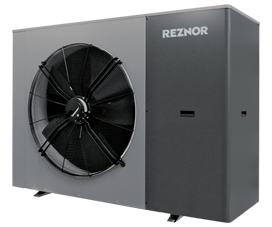To efficiently heat large warehousing and industrial units, it's absolutely crucial to maintain optimal working conditions, safeguarding equipment, and ensure the comfort of employees. While there are various heating options available, it's essential to choose a solution that balances energy efficiency, cost-effectiveness, and suitability for the specific requirements of each facility. In this article we will take a look at how the RHeco unit heater is an ideal choice for efficient heating…
Firstly, let’s take a look at the factors to consider before choosing your heating system:
- First, consider the unique requirements of the facility, such as size, insulation, ventilation, and activities conducted within the space.
- Next, opt for high-level heating systems or unit heaters that provide targeted and uniform warmth, minimising heat loss.
- Energy-efficient technologies, such as heat recovery systems, help reduce energy consumption and operating costs.
- Implement zoning and control systems to tailor heating to specific areas and automate temperature adjustments based on occupancy.
- Proper insulation and air sealing prevent heat loss and maintain a consistent temperature.
- Regular maintenance ensures the system runs optimally and prolongs its lifespan.
When looking for the most efficient way to heat warehousing and industrial units, unit heaters are a fantastic choice as they can provide energy and cost savings over a long period of time.

Unit heaters fall under the warm air heating category, which is an ideal option for warehousing and industrial unit heating.
Warm air heating works by having heaters warm the air inside of the warehouse or large space. This warmer air then heats the employees ensuring a comfortable temperature level. At their most basic level, the heaters work by drawing air over a heat exchanger. As the heat exchanger then heats up the air to the desired temperature, the now-warmed air is distributed across the facility space by a fan. In order to maintain consistent temperatures with a warm air heating system, the warmed air has to be distributed evenly throughout the entire facility.
When it comes to choosing a warm air heating system, you have many different options. These can be summed up into three main categories which are direct-fired, indirect-fired, and electric element.

Gain thermal efficiencies up to 109% with RHeco
In times of rapidly increasing energy costs, reducing your energy consumption makes sense both financially and environmentally. Especially in such large spaces like warehouses, heating can be lost rapidly, as if your money is flying right out the door! However, by choosing RHeco, you can gain thermal efficiencies up to 109% and avoid rising costs.
Key Features include:
- Up to 35% energy saving on replacement heaters;
- “Pull through” technology ensures no gas can escape into the heated space;
- Powerful air throw means improved heat distribution.
Our RHeco unit heaters exceed the requirements of current Building Regulations L2, providing exceptional levels of seasonal efficiency.
Meet your productivity and sustainability needs
With the Net Zero worldwide push, you're sure to be searching for different ways to reduce your carbon footprint, whilst saving costs. By choosing the RHeco unit heater, you're gaining significantly reduced CO2 & NOx emissions (under 25ppm) whilst using one of the most efficient gas-fired options on the market. Furthermore, with user-friendly maintenance and enhanced reliability, you can install yours with ease and save precious time for more important tasks.
RHeco unit heaters are ideal for new low carbon buildings and perfect for:
- Automotive workshops
- Factories
- Retail outlets
- Sports facilities and halls
- Warehouses
Heat warehousing and industrial units with Reznor
Efficiently heating warehousing and industrial units requires a holistic approach that considers the unique requirements of each facility. By selecting the appropriate heating technology, incorporating energy-efficient practices, and implementing effective controls and maintenance routines, businesses can achieve optimal comfort and operational efficiency. By prioritising energy efficiency, companies can also reduce their environmental footprint and contribute to a sustainable future.















